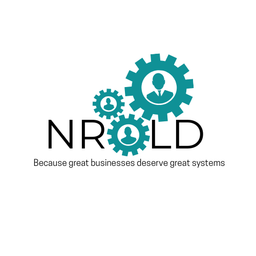Build a Weekly Learning Routine Around Your Business Schedule
The secret is not to find more time, but to be more strategic with the time you have. A structured weekly learning routine turns learning from a random, guilt-inducing chore into a powerful and manageable habit.

This guide will provide a simple, step-by-step framework to help you integrate learning into your business schedule.
Step 1: Stop Learning Randomly and Set a Quarterly Focus
The biggest mistake busy people make is learning reactively. They see an interesting article or a random YouTube video and click on it. While that can be fun, it is not strategic. Your learning must be tied directly to your business goals.
The Framework: Your Quarterly "Growth Gap" Analysis
Before each quarter, take 30 minutes to do this simple exercise. It will define what you need to learn.
- Review Your Business Goals: Look at your top one or two goals for the next 90 days. Are you trying to increase sales, improve operational efficiency, or launch a new product? Be specific.
- Identify Your Skill Gaps: Ask yourself, "What is the number one skill I lack that is holding me back from achieving this goal?" Be brutally honest.
- Choose ONE Learning Focus: Do not try to learn five things at once. You will fail. Pick one primary skill to focus on for the entire quarter. This focus is your north star.
Example:
- Quarterly Business Goal: Increase online sales by 20%.
- Identified Skill Gap: "I have a great product, but I have no idea how to run effective digital marketing campaigns. I am wasting money on ads that don't work."
- Your Q3 Learning Focus: Digital Marketing Fundamentals, with a special emphasis on understanding Google Analytics and paid social media ads.
By doing this, you are no longer just "learning." You are strategically upskilling to solve a real business problem. This focus makes every minute you spend learning more valuable.
Step 2: Design Your Schedule with "Micro-Learning Blocks"
You do not need to find a 5-hour block every weekend to learn. That is unrealistic and will lead to burnout. Instead, you need to master the art of "micro-learning"—using small, planned pockets of time throughout your week.
The Framework: "Find the Pockets" Scheduling
At the start of each week, look at your calendar and identify your learning pockets. These are small, otherwise wasted moments that you can claim for learning.
- Your Commute: If you drive, this is perfect for podcasts or audiobooks. If you take public transit, you can read or watch a video.
- Your Lunch Break: Instead of scrolling through social media for 30 minutes, you can watch one module of a course.
- The First 20 Minutes of Your Day: Before you dive into emails, spend 20 minutes reading an article or a chapter of a business book.
- Waiting Time: Waiting for a meeting to start or standing in line? Use that 5-10 minutes to read a saved article.
Once you find these pockets, schedule them in your calendar. Treat "15 min Podcast on Marketing" with the same respect as a client meeting. If it is on your calendar, you are far more likely to do it.
Example of a Weekly Micro-Learning Schedule:
- Monday (Commute): 20 min - Listen to a marketing podcast.
- Tuesday (Morning): 20 min - Read one chapter of a book on digital ads.
- Wednesday (Lunch): 30 min - Watch one video module of a Google Analytics course.
- Thursday (Commute): 20 min - Re-listen to Monday's podcast to solidify the ideas.
- Friday (Afternoon): 45 min - "Implementation Block." This is crucial. Use this time to apply one thing you learned this week.
This schedule adds up to over two hours of focused learning, all without disrupting your core work schedule.
Step 3: Match Your Learning Tools to Your Time and Topic
Now that you know what you are learning and when, you need to choose the right tools for the job. Not all learning resources are created equal.
The Framework: The "Right Tool for the Job" Toolkit
Match your learning resource to the type of learning block you have scheduled.
- For Passive Learning (low focus time, like driving or chores):
- Podcasts: Find shows dedicated to your learning focus.
- Audiobooks: Use a service like Audible to learn on the go.
- For Active Learning (high focus time, at your desk):
- Online Courses: Platforms like Coursera, LinkedIn Learning, Udemy, and HubSpot Academy offer structured courses on almost any topic.
- Books and E-books: Go deep on a subject with a well-written book.
- Articles and Newsletters: Follow industry blogs and newsletters for the latest trends. Use a tool like Pocket to save articles to read later.
- For Implementation and Practice (the most important part):
- Learning without doing is just entertainment. Your Friday "Implementation Block" is where the magic happens. Your goal is to take one small piece of what you learned and apply it directly to your business.
Example: Executing the "Digital Marketing" Learning Plan
- Podcasts: The Digital Marketing Podcast, Marketing School.
- Online Course: "Google Analytics for Beginners" on the Google Analytics Academy (it's free!).
- Book: Building a StoryBrand by Donald Miller.
- Friday Implementation Task: "Based on the course module I watched, I will log into my Google Analytics account and create one custom report to track website traffic from social media. This will take me 30 minutes."
Stop feeling guilty about not having time to learn. Instead, get strategic. Action builds business. Start small, start smart—then scale.

This content is AI-assisted and reviewed for accuracy, but errors may occur. Always consult a legal/financial professional before making business decisions. nrold.com is not liable for any actions taken based on this information.


